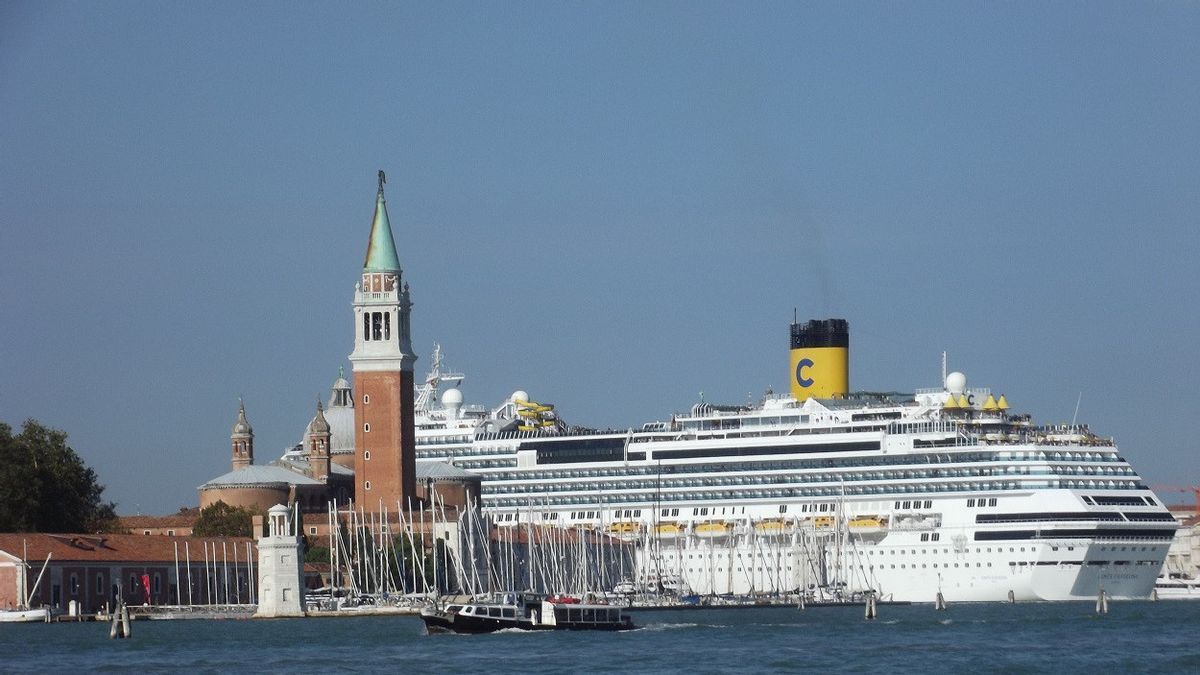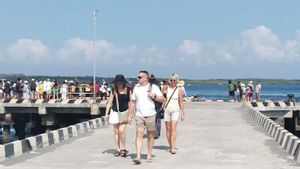JAKARTA - Italian authorities have officially banned large cruise ships from sailing to the city center and anchoring in the Venetian lagoon from August 1, as the threat of environmental damage increases.
The decision comes just days before a meeting of the United Nations cultural organization UNESCO, which has proposed adding Venice to its list of endangered heritage sites.
"The law adopted today is an important step for the protection of the Venetian lagoon system," Italian Prime Minister Mario Draghi said after the decree was approved at a cabinet meeting.
He added that there would be compensation for people who lost their livelihoods due to this ban. As part of the policy, large vessels will be diverted to the industrial port of Kota Marghera.
However, this was seen as only a temporary solution, with ministers calling for the idea of a new permanent terminal.

Cruise passengers provide a big economic boost to Venice, but many residents say the giant 'floating hotel' shouldn't sail past iconic St Mark's Square.
They warned the ships were causing massive waves that damaged the city's foundations and damaged the fragile lagoon ecosystem.
The debate over this issue was revived with the return of cruise ships last month to the region, after the coronavirus pandemic and tourists coming back.
Venice was added to the UNESCO heritage list in 1987 as an 'extraordinary work of architecture'. However, the agency warned last month of the need for "more sustainable tourism management".
After years of debate, Italy's Culture Minister Dario Franceschini said the government had decided to act now, avoiding the real risk of the city being added to the endangered world heritage list.
"From August 1, large ships will no longer be able to reach Venice via the St Mark's Basin, St Mark's Canal or the Giudecca Canal," said Infrastructure Minister Enrico Giovannini.

In addition to compensation for residents affected by this ban and displacement, the Italian government has also allocated a budget of 185 million US dollars to invest in the Port of Marghera.
Giovannini said the Italian government's ban was a "necessary measure to protect the integrity of Venice's environment, landscape, arts and culture."
It will only apply to larger vessels, while ships carrying a maximum of up to 200 passengers can still be allowed to enter Venice's lagoon.
On the other hand, if it has any of the following four criteria, weighs more than 25,000 tons, is more than 180 meters long, is more than 35 meters high, or produces more than 0.1 percent sulfur, the ship will be barred from entering the lagoon.
Meanwhile, Confturismo Tourism Association vice president Marco Michielli said the new law represented a "good compromise" for all parties.
"Marghera's solution will maintain port activity in Venice, on the one hand protecting jobs and activities, and on the other freeing the Giudecca Canal," he explained.

The issue of cruise ships in Venice has sparked a global debate, and last month celebrities and cultural figures including Mick Jagger, Francis Ford Coppola to Richard Armstrong, Director of New York's Solomon R. Guggenheim Museum, issued calls for action.
As previously reported, the Italian government said it wanted to reconcile the need to protect the artistic, cultural and environmental heritage of Venice and its lagoons, with the interests of shipping and goods traffic.
"The right decision, and one that has been awaited for years. UNESCO has called for this in the past. Anyone who has visited Venice in recent years is surprised to see these ships, hundreds of meters long and as tall as apartment buildings, passing through the a fragile place," said Italian Culture Minister Dario Franceschini, as reported by CNN.
Plans to build a terminal outside the lagoon have already begun and are currently in the public consultation stage. This meant previous plans to direct ships to Marghera and Fusina, both on land but within the Venetian lagoon, would not be possible.
Previously, authorities had agreed to reroute large ships from the St Mark's basin and the Giudecca Canal, where they are just meters from the city center, to dock at Marghera.
The heavy flooding that hit Venice in recent years has also been linked to erosion of the lagoon by large ships. Although, there are also those who call it the impact of global warming.
The English, Chinese, Japanese, Arabic, and French versions are automatically generated by the AI. So there may still be inaccuracies in translating, please always see Indonesian as our main language. (system supported by DigitalSiber.id)













